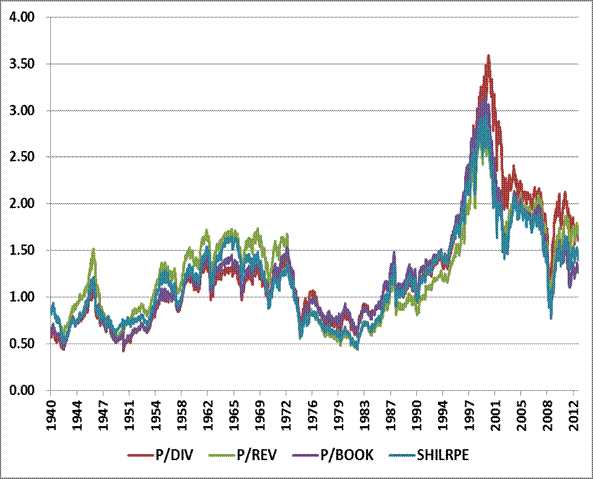I got around to reading the latest weekly commentary from John Hussman and I am glad I did. The whole article is worth a read, if not two. The following is an excerpt...

In the day-to-day focus on the “fiscal cliff,” our
own concern about a U.S. recession already in progress, and the
inevitable flare-up of European banking and sovereign debt strains,
it’s easy to overlook the primary reason that we are defensive here:
stocks are overvalued, and market conditions have moved in a two-step
sequence from overvalued, overbought, overbullish, rising yield
conditions (and an army of other hostile indicator syndromes) to a
breakdown in market internals and trend-following measures. Once in
place, that sequence has generally produced very negative outcomes, on
average. In that context, even impressive surges in advances versus
declines (as we saw last week) have not mitigated those outcomes, on
average, unless they occur after stocks have declined precipitously
from their highs. Our estimates of prospective stock market
return/risk, on a blended horizon from 2-weeks to 18-months, remains
among the most negative that we’ve observed in a century of market
data.
On the valuation front, Wall Street has been
lulled into complacency by record profit margins born of extreme fiscal
deficits and depressed savings rates. Profits as a share of GDP are
presently about 70% above their historical norm, and profit margins
have historically been highly sensitive to cyclical fluctuations. So
the seemingly benign ratio of “price to forward operating earnings” is
benign only because those forward operating earnings are far out of
line with what could reasonably expected on a sustained long-term
basis.

The remainder of the article can be read here.
No comments:
Post a Comment